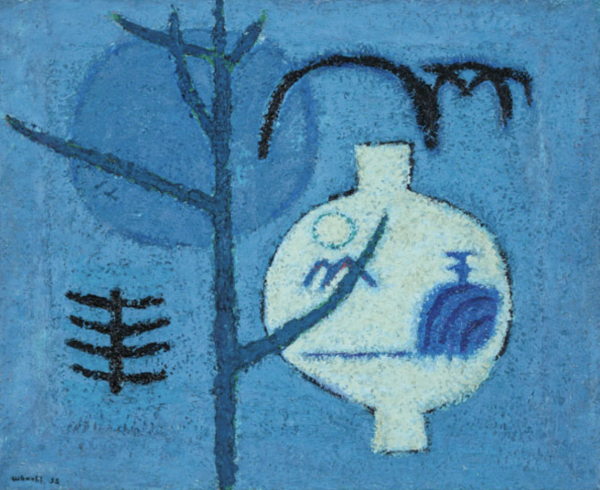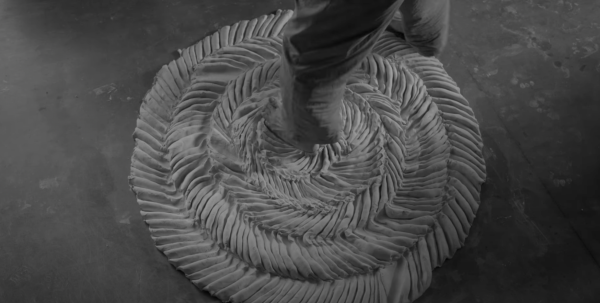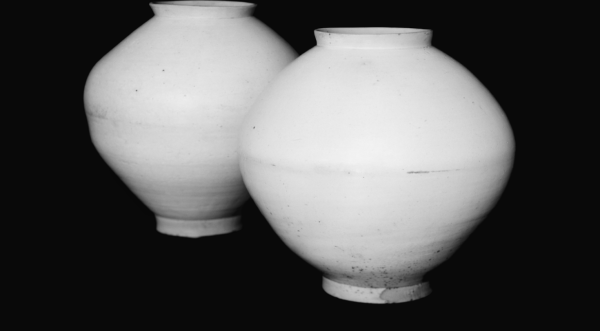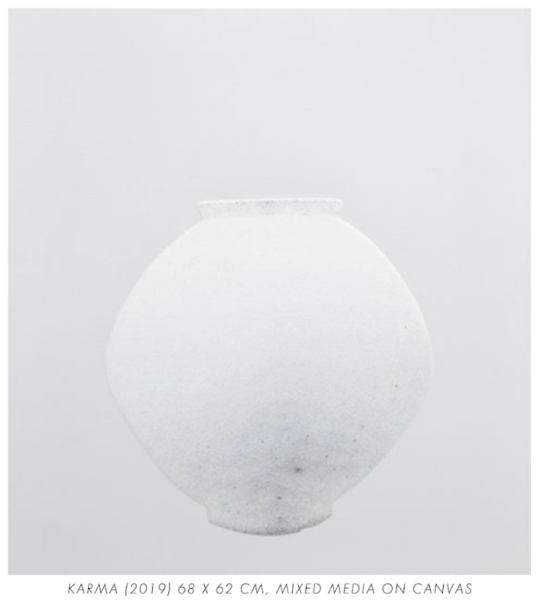A smooth, curvilinear surface resonates a sense of depth and balance. The pure white moon jar stands as a symbol of elegance and individuality. Yet behind the austere beauty of this jar lies the history of South Korea and a complex process. From selling at $4.5 million at the Christie’s Auction to being exhibited in various major exhibitions around the world, the moon jars have been resurfacing since the 20th century.
First created during the Joseon dynasty, the moon jars served as both utilitarian and decorative objects. The Joseon Dynasty was a period of neo-Confucianism, and the minimalistic form reflects the Confucian ideals of modesty and simplicity. These jars held flowers or wine, and sometimes served as votive vessels.
Towards the end of the 19th century, the moon jars became a rare sight in Korea. As clay techniques improved, potters turned to new forms of ceramics. However, during the 20th century, the jars were brought to attention through an artistic lens. Artist Go Yu-seop began calling these forms “moon jars,” the name that continues to be used today. The popularity further expanded when modern artist Kim Hwan-ki began using moon jars as a source for his artistic motifs and inspiration.

The process for building a moon jar is far more intricate than its appearance. The pure white surface comes from baekja, also known as white kaolin clay. The clay must include both smaller and larger particles to withstand the strong firing process in the kiln.

What makes the moon jar unique is its construction from two separate hemispheres. Joining these halves demands extreme precision, making moon jars a form that only experienced potters can achieve.
“Because the form widens so drastically from a narrow base, there is a risk of collapse,” Hannah Ireland, Ceramics teacher, said. “The artist has to have an advanced level of skill and control on the wheel. Large moon jars are made in two hemispheres, which then have to be connected together. The artist has to match their sizes and make sure the bottom form is strong enough to support the top, so they must have strong knowledge of the properties of the particular clay they are working with. Traditional porcelain is especially challenging.”
This process leaves a slight asymmetry, which is distinct for every moon jar. However, this imperfect roundness is what ironically conveys a sense of balance and individuality.

“Looking at a moon jar can feel meditative, almost as if it holds silence and eternity within its form,” Minseo Park (12), Ceramics student, said. “To me, it strikes a feeling of calmness and serenity, but also a sense of gentle imperfection that makes it human and relatable. It embodies both fragility and endurance, standing as a symbol of timeless beauty.”
Many modern and contemporary artists draw inspiration from moon jars. Among them is artist Choi Young-wook, who combines elements of traditional Korean art with modern techniques to create paintings of moon jars.
Some artists have reinterpreted the moon jar as a whole, and these were highlighted in the Frieze art fair this year.

Moon jars are a significant part of South Korean identity, and continue to expand their influence today.

